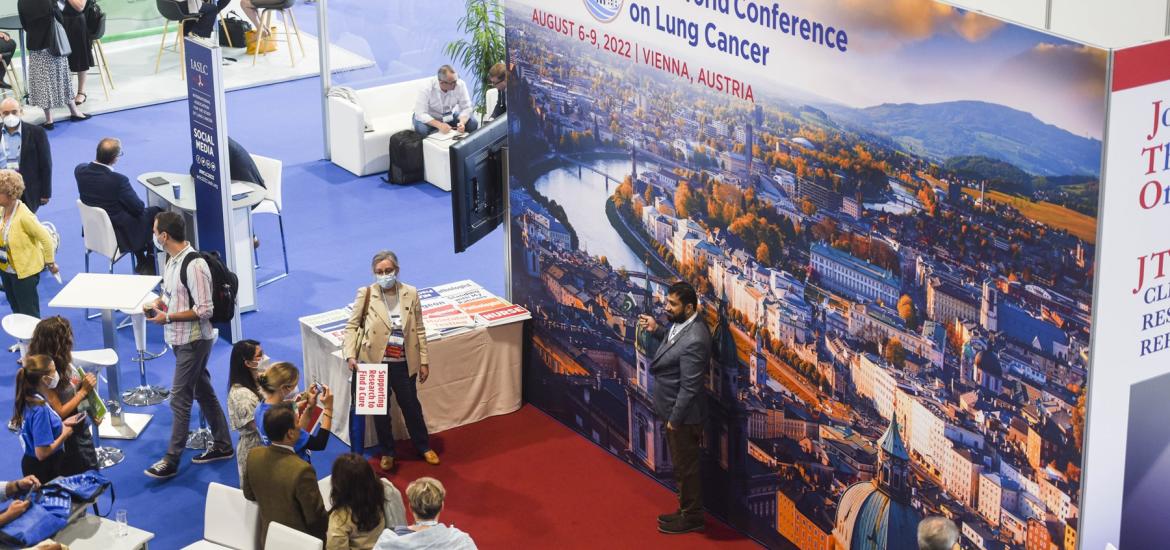
World Lung 2024 – a way forward for CEACAM5?
Patients' expression of CEACAM5 might hold the key to activity after all.
Patients' expression of CEACAM5 might hold the key to activity after all.

Given that Sanofi has already discontinued tusamitamab ravtansine in favour of a separate anti-CEACAM5 ADC, SGN-CEACAM5C, a post-mortem of the former’s failed pivotal Carmen-LC03 trial will be more relevant to competitors in the CEACAM5 field than to any hopes of resurrecting the original Sanofi asset.
One key takeaway emerged from the full data presentation at World Lung today: Carmen-LC03 might just have worked had a higher cutoff been used for patients’ CEACAM5 expression. This might be a chance finding, and the claimed efficacy could be a figment based on the expression cutoff used post hoc, but the findings will be noted especially by BeiGene and Merck KGaA.
These two, along with Sanofi with its remaining Seagen-originated asset, are among the few significant players still pursuing activity at CEACAM5. According to clinicaltrials.gov entries none of the three is using a specific level of CEACAM5 expression as an enrolment criterion.
50% might not be enough
Carmen-LC03, in chemo and immune checkpoint-relapsed NSCLC, was notable for preselecting for CEACAM5-positive cancers, specifically at a CEACAM5 expression level of ≥2+ intensity in ≥50% of tumour cells assessed by immunohistochemistry.
On the co-primary endpoints of overall and progression-free survival this all-comers population showed a bust. OS at interim analysis showed a non-significant 15% reduction in risk of death for tusa-R versus docetaxel, while final PFS yielded a 1.14 hazard ratio, Institut Gustave Roussy’s Dr Benjamin Besse told World Lung.
However, applying an ≥80% CEACAM5 expression level yielded promise, a post-hoc analysis suggests. This showed a hazard ratio for OS of 1.02 in patients expressing CEACAM5 at 50-79%, but an apparently more promising 0.71 for ≥80% expressers, suggesting – post-hoc – that lower-expressing patients had dragged down the overall result.
Analysis of Carmen-LC03
| Hazard ratio for tusamitamab ravtansine vs docetaxel | |
|---|---|
| OS in all-comers (CEACAM5 ≥50%) | 0.85 (0.64-1.11), p=0.11 |
| OS in CEACAM5 50-79% | 1.02 (0.69-1.50) |
| OS in CEACAM5 ≥80% | 0.71 (0.49-1.03) |
| PFS in all-comers (CEACAM5 ≥50%) | 1.14 (0.86-1.51), p=0.82 |
| PFS in CEACAM5 50-79% | 1.38 (0.92-2.07) |
| PFS in CEACAM5 ≥80% | 0.87 (0.60-1.26) |
Source: IASLC & Dr Benjamin Besse.
Furthermore, there is some suggestion that CEACAM5 expression might have a positive prognostic role in these patients, something that could explain “high performance” of the docetaxel control arm. At baseline around 45% of patients across the two cohorts had CEACAM5 expression of 50-79%, while the remainder were very high expressers.
Of course until a study of an anti-CEACAM5 project is run that prospectively enrols only very high CEACAM5 expressers – assuming that there is scientific and financial willingness to do so – these will remain merely chance findings.
A final uncertainty is how and when CEACAM5 expression levels are measured. Besse said Carmen-LC03 was limited by using archived rather than fresh tissue to evaluate CEACAM5 in most participants; chemo or immunotherapy given after samples were archived might have affected the antigen’s actual expression before tusa-R was administered.
1624













